Sometimes the hardest thing in getting out there adventurin’ is not knowing quite where to begin. In a recent Adventure Queens survey we found that the second biggest thing from stopping people going wild camping, is not knowing how to find a good spot for a wild night out. So below are the five steps that I go through myself before heading out there.
ONE: THINGS TO ASK YOURSELF BEFORE YOU START
No one likes too much choice – choice can be debilitating. We don’t want finding a wild camp spot to end up like a trip to the milk aisle in the supermarket (do I want almond, soya, skimmed, goats, semi-skimmed….. COCONUT?)
So here are a list of questions to ask yourself before even starting the search for a spot – they’ll help you home in on what’s going to make it is great night out on the forest-tiles.
1. Will you have a car, or are you relying on public transport?
- If you’re going via train or bus, you’ll need to pick a spot within a hour or so walk from the bus stop or train station.
- If you’re going by car, your spot will be best if less than an hour from a car park, or street parking spot.
- And if you’re cycling – take a slap on the back. What a genius idea.
2. Do you fancy a great hilltop view, or would you prefer to sleep in woods?
- If you fancy a hilltop view you’ll be looking for ‘viewpoints’, places with the word ‘hill’ in their name and contour lines close together on the map.
- If you prefer a wooded area, you’ll be seeking out the mini pictures of trees on the map.
3. Is it likely to rain on the night you intend to go?
- If it is looking set to rain, and you don’t fancy sleeping out in the open – pick a spot close to a wooded area, so that you have the option to sleep under the tree canopy if the weather turns.
4. What time is sunset?
- Depending on the time of year, and the location you choose – it’s nice to be in wild camp ‘position’ an hour before the sun goes down.
- By ‘in position’ I don’t mean the downward dog. I mean more that you are sat with a picnic dinner at your feet and a glass of beer/lemonade/vino in your hand.
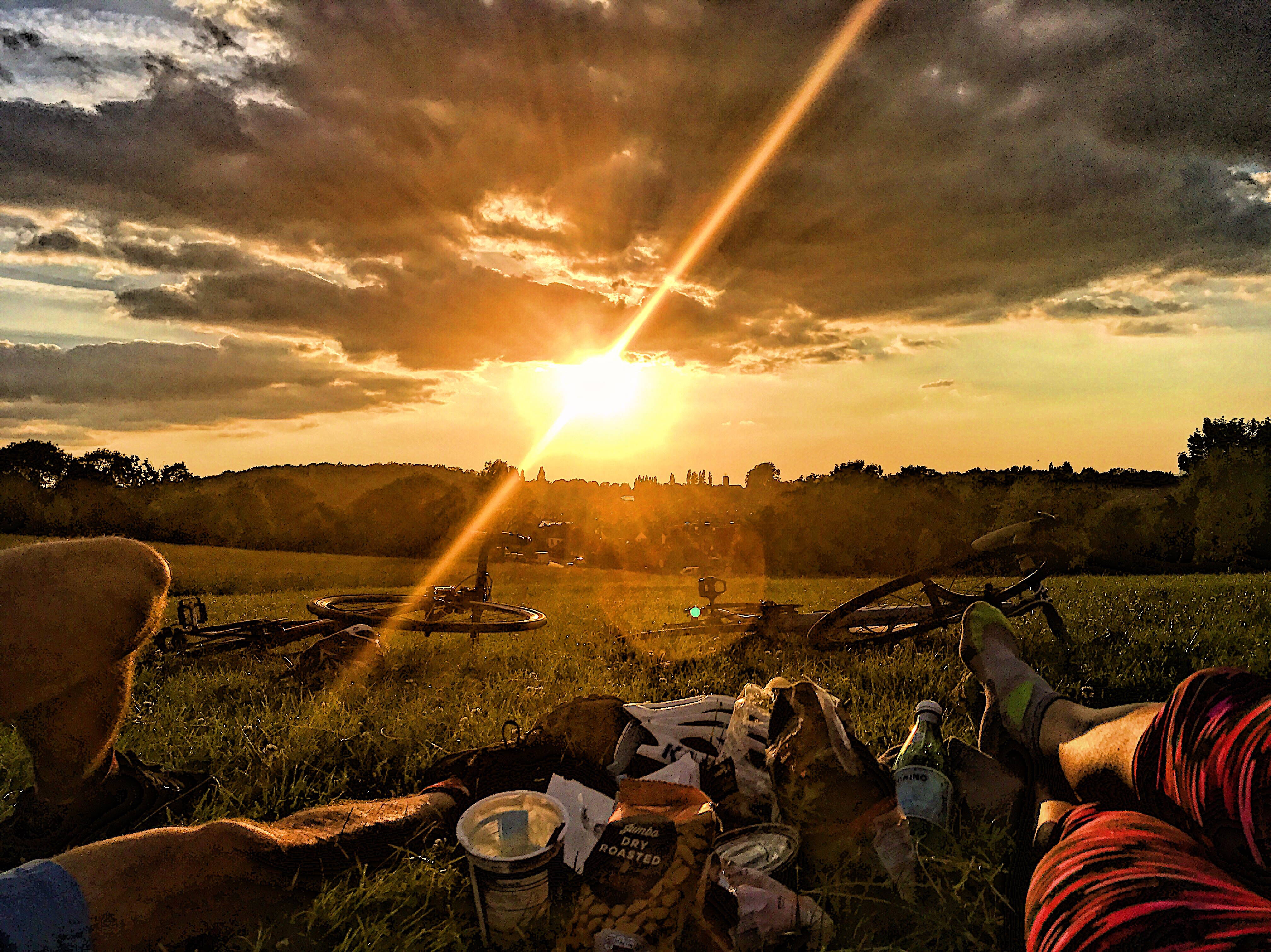
TWO: CHOOSING AN AREA OR THEME
Once you’ve narrowed down the kind of spot you’re looking for, decide on a rough area of the country you’d like to explore, or something specific you’d like to see. For example you might fancy a camp out somewhere in the county of Buckinghamshire, or alternatively a camp out in one of the UK’s gurt lush Bluebell woods. Once you have a rough area or theme – Google to your hearts content. Things to try:
- ’Best views in [insert county]’
- ‘Best walks in [insert county]’
- ‘Highest point in [insert county]’
- ‘Lakes/rivers in [insert county]’
- ‘Bluebell woods in [insert county]’
- ‘UK’s best bluebell woods’
That lot will set you off in the right direction. Sometimes even ‘most romantic spots’ can turn up some gems too. Saucy.
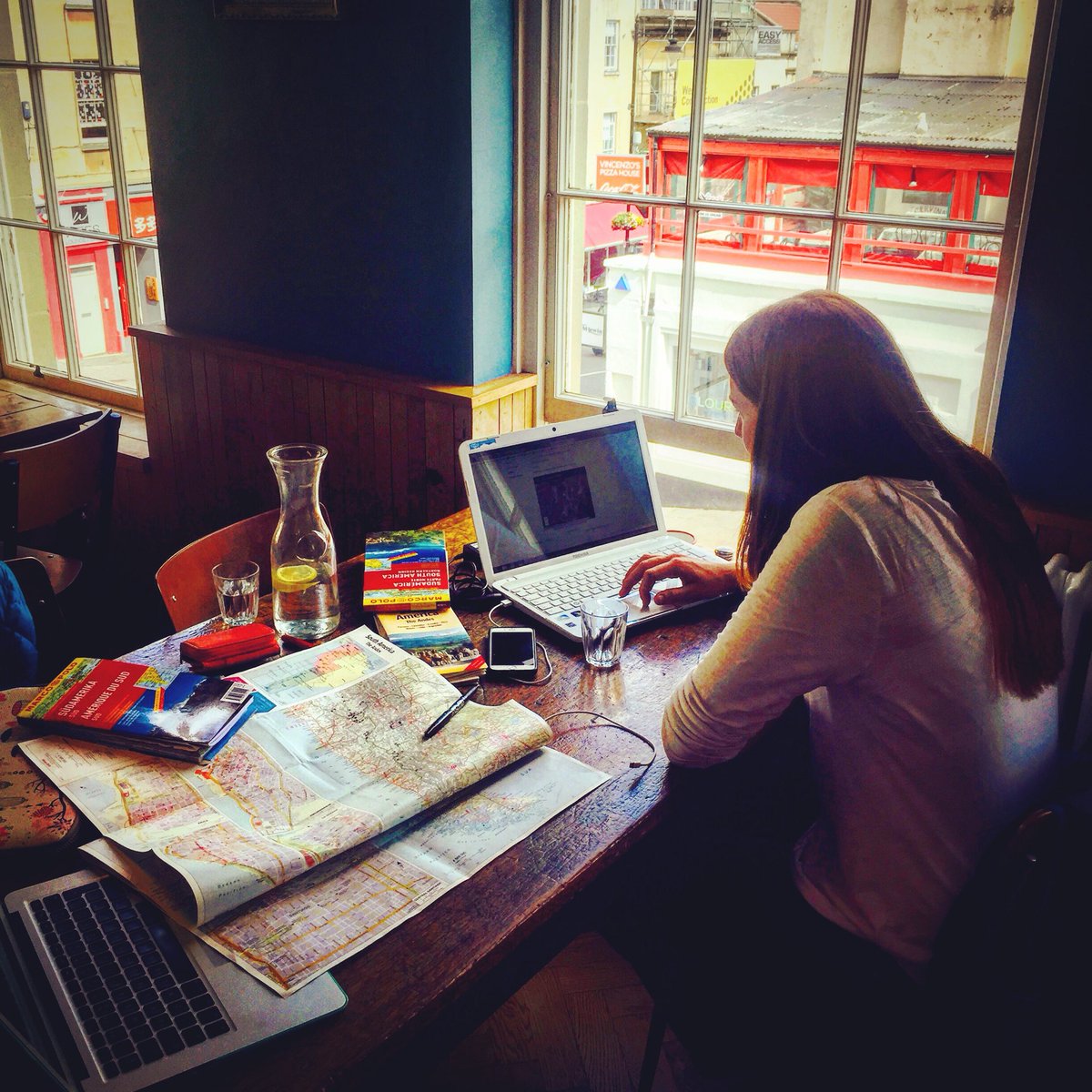
THREE: GET MAP HAPPY (also known as MAPPY)
You don’t need to be a wizard at map reading to be able to find a good wild camp spot, and you certainly don’t need to know how to find a grid reference or any of that fandango. The first thing is to find a set of maps that you find easy to read. Personally, I love good old fashioned paper Ordinance Survey maps, or their online equivalent.
Once you have found an area you think you might like to explore, head back to Google and plug in ‘[area / town / hill OS map]. Hopefully you’ll find an online OS map of the area. If not, ‘The Walking Club’ usually have one available. Here’s what you’re then looking for on the OS map:
- Viewpoint/lookout symbols – these mark 180 degree or 360 degree views.
- Wooded areas – shown by little cartoon esque trees in green areas.
- Clearings – shown by white/blank spaces on the map, surrounded by green areas.
- Flat spots – areas without any ‘contour lines’ in them. When the contour lines are close together, that means it’s a steep slope.
- Trails – (marked in pink with dots, dashes and diamonds). The Ridgeway, the Cotswold Way, the North Downs Way. Where there’s a trail, follow it and you’ll find a great viewpoint or area to wild camp somewhere along it, guaranteed.
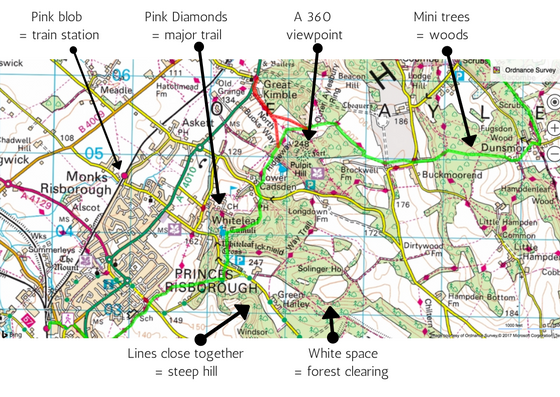 FOUR: NAVIGATION ON THE NIGHT
FOUR: NAVIGATION ON THE NIGHT
The world of navigation via phone has come on leaps and bounds in recent years. Whereas before you may have needed to shell out many gold dabloons for mapping programmes – there are now some great apps available for next to nothing. The crucial thing about these apps is that you don’t need signal to use them. Just whack your phone in aeroplane mode to save battery, and the maps will work offline.
Map Out: this one is my absolute fave. It costs £5 for the app up front, but all downloads after then are free. Just zoom in and download the tiles. You can mark waypoints (points of interest), draw and save routes ahead of time and send routes to others.
View Ranger: Free to download, then a small cost to download blocks of tiles. Again, you can mark points of interest and plot routes ahead of time.
Other ones to check out: Komoot, Maps.me, or MapMyHike.
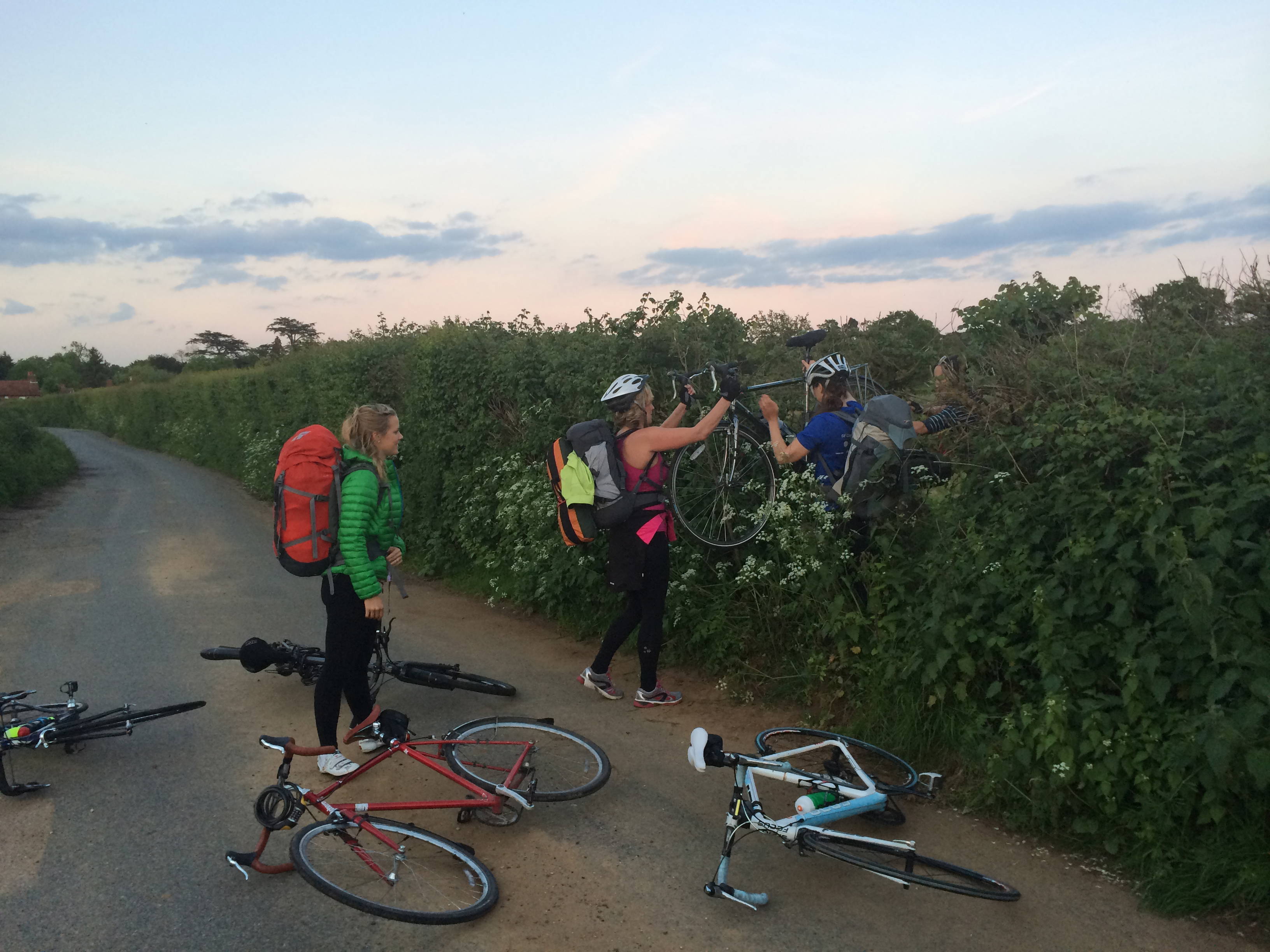
FOUR-AND-A-HALF: BONUS RESEARCH TOOL – SLOPE HUNTER
Slope Hunter is one of the best kept secrets for finding hilltops to sleep on. This site describes and rates the hills around the South East of the UK. It lets you know how to get there, who owns the land and what the ‘lift’ is like, should you wish to launch a small plane (who doesn’t these days?).
FIVE: MOST IMPORTANTLY OF ALL
Know that there ain’t no rights or wrongs when it comes to finding a wild camp spot. It’s best to find somewhere far enough away from the surrounding suburbs so that you’re not going to be disturbed, but equally if you are happened upon by the odd dog walker – it’s no biggy. More on feeling comfortable about the potential of being disturbed next week…
And finally… There are of course, many many times when I don’t do any of the above. When I’m on my own, with just one other or I plain decided I’d go adventurin’ 30 minutes before I left the office. I head somewhere that I think may have hills or a field, and just.. roll with it. This method is 100% acceptable and sometimes even more rewarding.
And that’s the lot on spot-hunting – until next time,
McNuff out xx
This is a series of ‘how to’ posts on wild camping. You can find last week’s post on what to take for a wild camp, here.
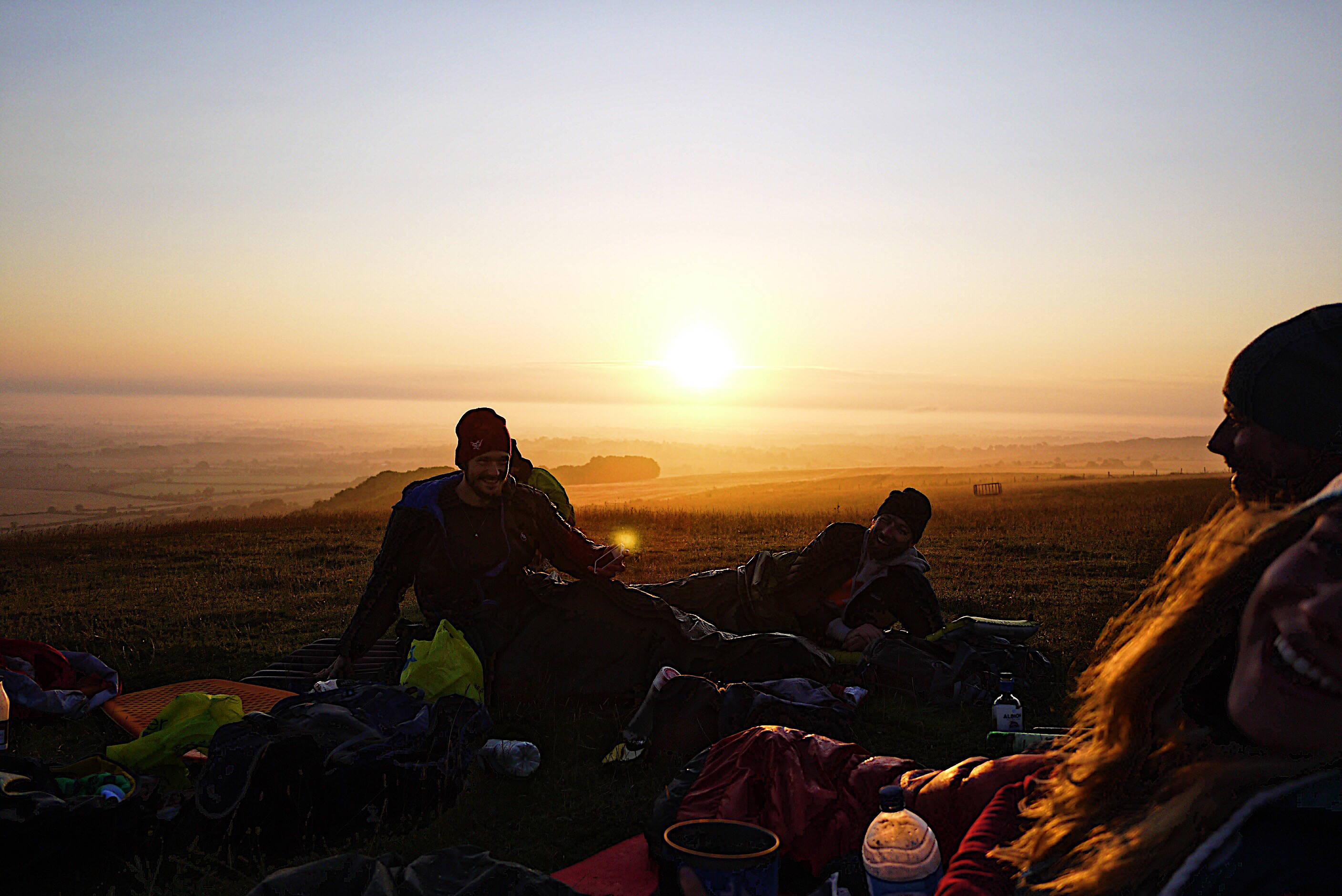


Mosquitos and black flies make a big difference, too – if they’re around, head for the hilltops.
Great advice 🙂
Although I have to admit, I tend to roll with it as I seem to be utterly unable to stick to a plan. But you definitely get a mix bag when you do that. In any case, it’s still a night out and balm for the soul 🙂
Rolling with it rules Allysse! I like to roll with it – Definitely the best way, but many feel more comfortable with a plan I guess. And you’re right – outside is outside no matter how you do it.